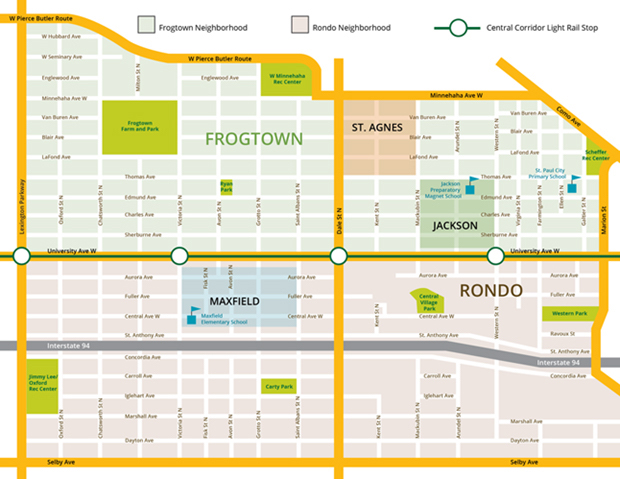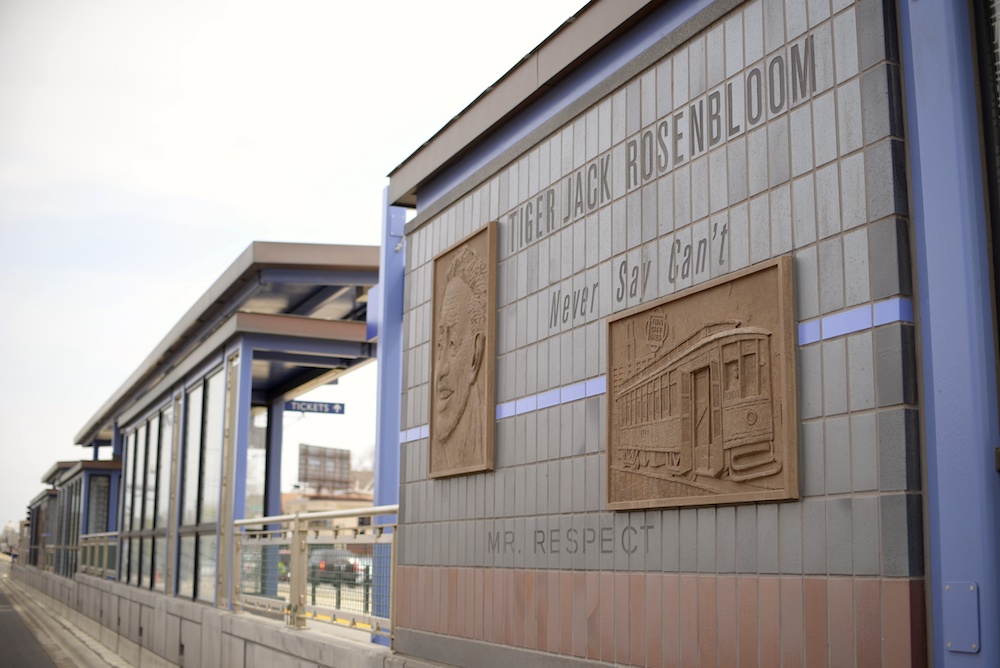
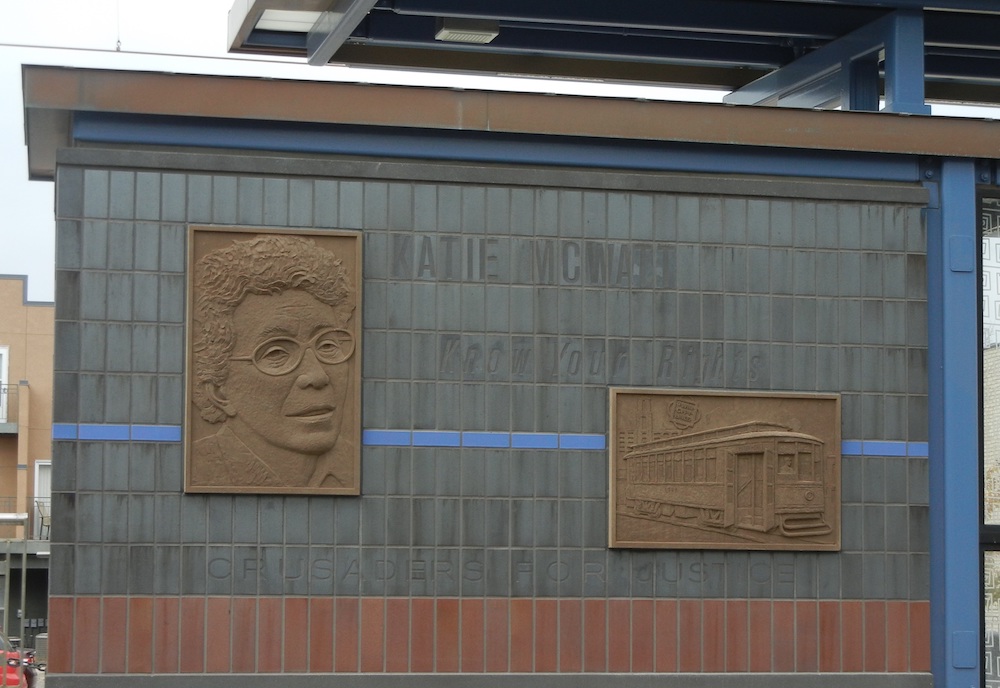
The community of Rondo inspires the public art at Victoria Street Station. This community has come into focus historically since its tragic demise in the sixties as a result of the construction of Interstate 94. The neighborhood of Rondo flourished as a primarily African-American community throughout much of the first half of the twentieth century; with great pride and integrity it contributed significantly to the causes of civil rights, labor unions and regional culture. The neighborhood has demonstrated great resiliency through an ongoing effort of reinvention. For this art work, the people represented in the cast stone portraits were chosen and voted on by the community members. With the larger portraits facing the street, there is also a frieze of text to provide context for the people presented. Words relevant to the individuals’ accomplishments are presented singularly and not in a sentence, to help tell that person’s story by association.
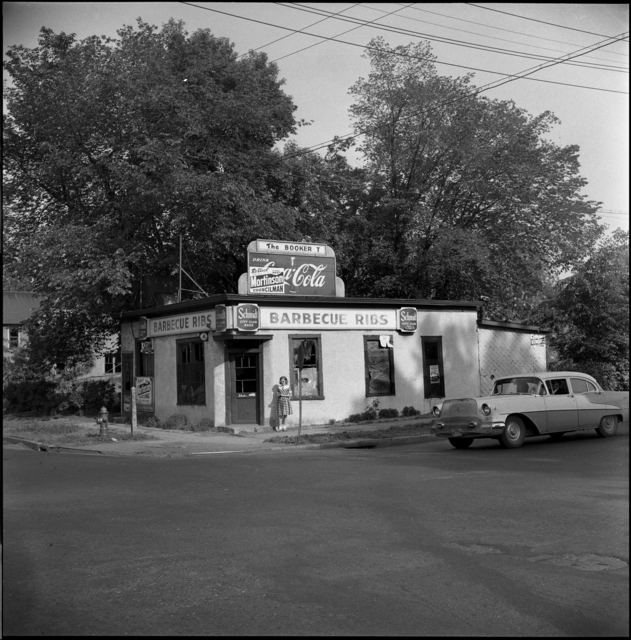
Booker T Café and Tavern, 831-833 Rondo Street, Saint Paul, 1960. Photo courtesy of Minnesota History Center
Foster Willey is a sculptor and public artist working in St. Paul, Minnesota, who creates large-scale projects for major municipalities involving architects, engineers, landscape architects, lighting designers, fabricators, historians, graphic designers and conservators.
Using the environment as the context for his public art, Willey enriches daily life with sculptural designs, which are supplemented by a process that includes the community voice. “Animating form thru the plasticity of materials and utilizing negative space to express both mass and transparency have been the focus of many of my sculptural investigations.” These formal concerns inform the symbolic content of his work, which often involves the search for an archetypal resolution. His work encompasses large-scale projects for various municipalities and design settings including commissions in bronze, fabricated metal, pre-cast concrete, terra cotta, and stone.
Originally from St. Joseph, Michigan, Foster received a Bachelor of Fine Arts from Grand Valley State University in painting and sculpture. He expanded his education with courses at Michigan State University and Andrews University where his mentor was British Sculptor, Allan Collins. Foster also attended the Naguib School of Sculpture in Chicago where he worked with Egyptian sculptor, Mustafa Naguib.
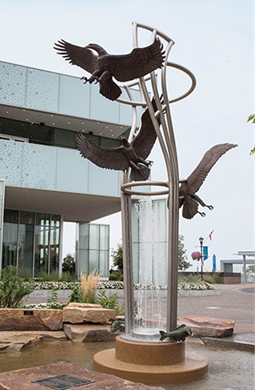
Ascent Fountain, Nicollet Commons Park, Burnsville, MN 2016
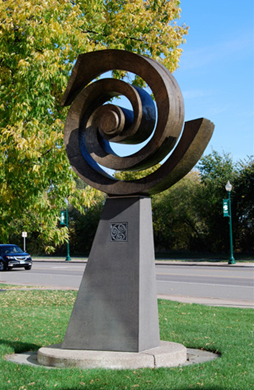
Triskele, Robert Trail Library, Rosemount, MN 2010
Most of the original Rondo Avenue and much of the historic Rondo neighborhood were destroyed when Interstate 94 was built. The street was named for an early settler, Joseph Rondeau. Part of the original street is now the frontage road near the Best Western Kelly Inn.
The neighborhoods north and south of Rondo Avenue, extending south into today’s Summit-University neighborhood and north to University Avenue, were always diverse. By the 1950s about 85 percent of St. Paul’s African-American population lived in the neighborhoods. The old neighborhood was divided into sections including Oatmeal Hill and Cornmeal Valley. The better-off residents lived in the western part of the community.
The freeway location chosen in 1956 along Saint Anthony Avenue took out Rondo as well. More than 600 African American families lost their homes. Numerous businesses and institutions were also lost. The neighborhood is celebrated every July at Rondo Days.
Above description is written by Jane McClure and found on the St. Paul Historical webpage: saintpaulhistorical.com/items/show/160
More information about the Rondo Neighborhood can be found here: mnopedia.org/place/rondo-neighborhood-st-paul
libguides.mnhs.org/rondo
Map courtesy of the Frogtown Home Fund.
